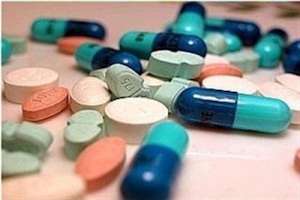Bang for the buck in stroke prevention: Study compares new and old drugs

When it comes to preventing stroke, millions of Americans with irregular heartbeats face a choice: Take one of the powerful but pricey new pills they see advertised on TV, or a much cheaper 60-year-old drug can be a hassle to take, and doesn't prevent stroke as well.
It doesn't seem like much of a contest—until you do the math. Which a University of Michigan Medical School team has just done.
For the first time, they looked at how cost-effective the two choices are from a patient's-eye view, as well as the viewpoint of insurers such as Medicare. They took into account how well the drugs prevent stroke, the side effects they both cause, the cost of the drugs and the monitoring, and the cost of caring for a stroke.
In the end, they found, the prescription drug coverage a patient has matters most.
Those without coverage, who could pay thousands of dollars out of pocket for the newer drug, may not get enough extra stroke-preventing benefit to make the money worthwhile to them.
But for the 70 percent of Medicare participants who buy extra insurance coverage to help them pay for prescriptions, the newer drugs are probably worth it, even though their insurance plan may charge more for them. And that means doctors and patients need to work together to choose carefully based on their individual circumstances and coverage.
The study focused on the use of clot-preventing blood thinner drugs called anticoagulants in patients over age 65 who have a condition called atrial fibrillation that raises stroke risk greatly. The researchers have published their results online in the American Journal of Cardiology.
The method the researchers developed could go far beyond studying these drugs. With so many pricey new drugs on the market for other diseases and conditions, the same approach could be used for other studies that put the patient first.
Warfarin vs. direct oral anticoagulants
Most cost-effectiveness studies compare two similar drugs, and look at costs and benefits from a societal or insurance viewpoint rather than the patient's viewpoint, says Geoff Barnes, M.D., M.Sc., a cardiologist at U-M's Frankel Cardiovascular Center who led the study and has studied the rise of the new drugs.
"But in this case, we have a new class of expensive drugs, the direct oral anticoagulants or DOACs, going up against a very inexpensive but less effective drug, warfarin, that requires active monitoring," he says. "While we found that a newer drug would be more cost-effective for society as a whole, and even cost-saving for people with drug coverage, the picture is very different for those without coverage."
The study compared the DOAC drug dabigatran, sold as Pradaxa, to warfarin. There are three other DOACs on the market. DOACs don't require blood tests or diet changes, don't interact with other drugs, and have other advantages over warfarin.
For society as a whole, or Medicare in particular, use of dabigatran is modestly more expensive than warfarin when all costs and benefits are taken into account - but the cost per year of life gained is within acceptable limits. That makes it more cost-effective from this standpoint.
But from a patient's standpoint, the picture changes depending on stroke risk and prescription coverage.
Making informed decisions
Barnes notes that in his own practice, he has seen patients with Medicare Part D prescription coverage hit the "donut hole" of coverage because of these drugs, and have to pay out of pocket just like a person without insurance. Though new policies aim to close the donut hole in the next few years, many patients still face it if they choose costly therapies. And that leads some to skip doses to save money - which means they get less stroke-preventing power.
Each patient must look at his or her own risk of stroke, and the likely costs of the two treatments - including the amount of time needed to visit an anticoagulation clinic each month if they opt for warfarin treatment.
The stroke-preventing benefit of DOAC drugs comes mainly from their ability to prevent rare, often deadly and very costly "bleeding strokes" far better than warfarin can. They only do a little better than warfarin at preventing ischemic strokes, the more common type caused by clots.
So, for an individual deciding whether or not to pay out of pocket for the more expensive new DOACs, it all comes down to becoming informed about how much stroke-preventing "bang" they'll get for the bucks they'll need to pay.
"In this age of shared decision-making and cost transparency, the patient needs to be an important part of the decision about which anticoagulant strategy to choose," says Barnes, a clinical lecturer in the Division of Cardiovascular Medicine. "If they don't know what it will cost them, they can't make an informed decision. Based on this study, we can give patients and physicians good cost-benefit data to use in that discussion. And studies like this need to inform value-based insurance design."
In addition to exploring the DOAC/warfarin issue further, he and his colleagues hope to apply their model to other questions in cardiovascular medicine, such as statins and antiplatelet medications.
More information: Brian M. Salata et al. Cost-Effectiveness of Dabigatran (150 mg Twice Daily) and Warfarin in Patients ≥65 Years With Nonvalvular Atrial Fibrillation, The American Journal of Cardiology (2015). DOI: 10.1016/j.amjcard.2015.09.048


















